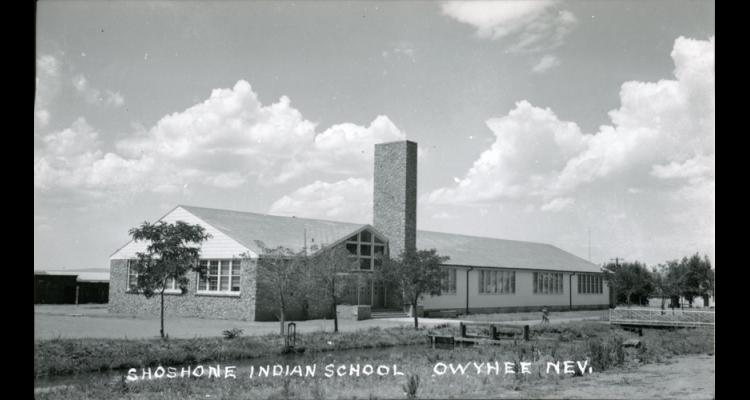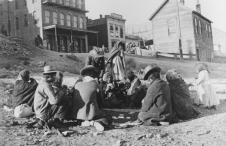Owyhee
Located in northeastern Nevada near the Idaho border, Owyhee slowly emerged after the establishment of the Duck Valley Indian Reservation in 1877. The town got its name from the Owyhee River, which flows through the reservation. Original housing was made of sagebrush and willow structures called wikiups, but permanent structures eventually followed. A small school was erected in 1881.
Shoshone and Paiute Indians on the reservation supported themselves by carving the land into a number of small ranches and irrigating them using water from the Owyhee River. The Indians successfully raised cattle and horses, as well as wheat, hay, and vegetables.
The largest challenge in early Owyhee was health care. Sickness and disease were common, and a doctor was not assigned to the reservation until 1882. Even then, residents of the reservation preferred their own medicine men, and the first doctor was eventually recalled.
In 1936 and 1937, a dam was built on the Owyhee River to form the Wild Horse Reservoir, which created a reliable water source for ranches and farms on the reservation. In 1969, the reservoir was improved to hold 72,000 acre feet of water.
Owyhee survives today with agriculture and recreation as important industries. Because the northern half of the Duck Valley Indian Reservation is located in Idaho, the town sets its clocks according to the mountain time zone. In 2000, Owyhee's population was 1,017.




